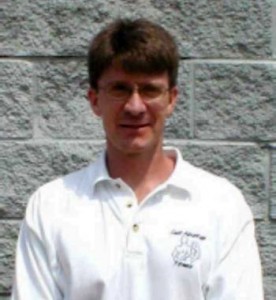Young Athletes weightlifting specific warm-ups
By Wil Fleming
When your program is full of barbell strength training , in particular the Olympic lifts, it is important to sharpen the skills of your young athletes with a weightlifting specific warm-up.
A general warm-up is necessary for young athletes to increase mobility and activation, prior to training. Once the athlete is warmed up in general however, a specific warm-up for the days activities should be used to prepare.
In all sports the general warm-up is followed by a specific warm-up, baseball players should touch a ball before actually throwing out the first pitch, basketball players should take a couple shots before the buzzer sounds, just as in those scenarios, in strength training it is important to use some external loading before the training of the day.
A complex is the perfect way to do that.
Complexes are multiple movements done sequentially without rest in between movements. In order to complete a complex it is important to complete all the prescribed reps of one particular movement before moving on to the next drill.
Complexes can be a tremendous tool for conditioning as well, but in this case I would like to think of them for warm-up only.
The great thing about complexes is that they can really include whatever it is that you want for a given day. For my athletes I think that they are a great source of variation in the program, and a great way to challenge them on a given day.
I typically design complexes around what the movements of the day will be, if our athletes are to be cleaning in the session ahead, I will design a complex that includes clean movements. If we are snatching, then the complex will include the snatch.
Designing a complex
Limiting factors:
Athletes should be able to complete the complex without a severe break in proper technique. Complexes will have one movement typically that will be the limiting factor in the amount of weight that is on the bar.
For example: A complex of 5 exercises- Hang Clean, Front Squat, Push Press, RDL and Bent over row. In this complex , for nearly all athletes the bent over row will be the movement on which they will struggle the most with a given weight. In this instance the weight that an athlete can use for the prescribed reps on a bent over row
Selecting Exercises
Selection of exercises should mimic what the athletes will be asked to do in the training session later in the day. It is also important to use the LIGHTER weight of a complex to work on areas in which many athletes struggle. In the clean or snatch that is the pull around the knee area, and with extension of the hips. Including a movement that will specifically work on that area of the lifts is important.
Exercises should be selected in an order that moves logically for the athletes. This means that the starting points of each movement should be similar to the previous one.
For example: A complex that includes Front squats, to RDL’s, to Push Press becomes much more difficult due to the fact that the bar has go from resting on the shoulders, to the hands and back to resting on the shoulders. Changing the order from Front Squat, to Push Press, to RDL keeps the bar in the same position as long as needed.
Importance of Exercises
Explosive movement should be prioritized in complexes. This does not however mean that all complexes have to start out with a full clean or snatch, it does mean that a clean pull, or full clean should precede front squats.
Explosive movement requires a greater level of technical proficiency young athletes need to be fresher to complete these movements.
Examples of Complexes
Clean Complex:
2 to 3 sets of 5 -7 reps of each of the following:
Clean pull from above knee, Clean High Pull from Mid Thigh, Hang clean from Mid thigh, Power Jerk, Front Squat, RDL, Bent Row
Snatch Complex:
2 to 3 sets of 5-7 reps of each of the following:
Snatch Pull from below knee, Snatch High Pull from Above Knee, Hang Snatch from Mid Thigh, , Snatch Jerk behind neck, Overhead Squat, Snatch Grip RDL.
These same complexes could be used with Dumbbells or even Kettlebells. Try implementing them before your young athletes next session.
Change Lives Today
Wil
The Olympic lifts are the most explosive and dynamic demonstration of force in which an athlete can participate. It is important to have established, an effective, efficient, and safe way to teach athletes to Olympic lift. Athletes can be taught at any stage to lift well, with proper technique using the methods outlined in this course. Learn more on Olympic Lifting with young athletes here…




